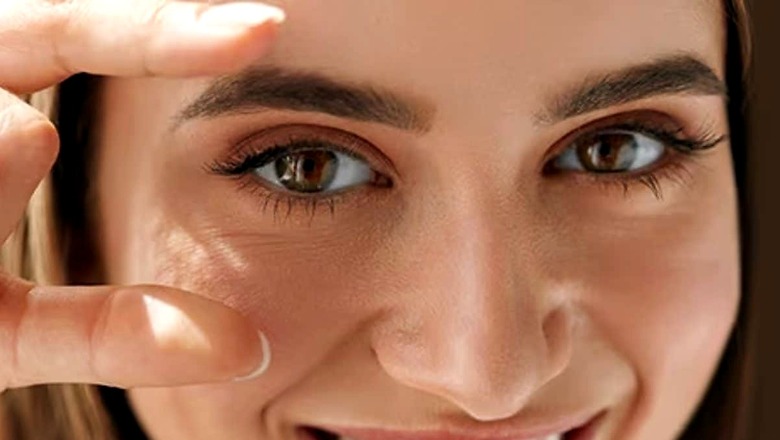
views
“The eyes, optic nerve, and brain form a vital trinity for vision, according to Ayurveda, requiring the balance of doshas (Vata, Pitta, and Kapha) for optimal functioning.”
Ayurvedic knowledge provides valuable insights:
Pitta controls eye health, which affects colour, clarity, and general well-being. Pitta imbalance might appear as redness, dryness, or sensitivity. Ayurveda recommends cooling techniques, eye exercises, herbal drops, and a Pitta-balanced diet and lifestyle.
Vata regulates signal transmission via the optic nerve. Vata imbalances disturb its normal functioning, resulting in visual problems. Ayurvedic medicine recommends feeding and soothing Vata through food, stress management, and Abhyanga (oil massages).
All three doshas impact the brain, which is connected to the eyes and optic nerve. A healthy balance of Vata, Pitta, and Kapha is essential for optimal brain function and perception. Meditation, yoga, pranayama, and dosha-specific food are all recommended by Ayurveda for brain health.
Ayurveda recognises these organs’ interdependence and emphasises a holistic approach to maintaining their equilibrium. Qualified Ayurvedic doctors offer personalised advice that considers dosha constitution and imbalances, promoting eye health, optic nerve function, and brain vigour.”
The eyes, optic nerves, and brain all work in unison to produce the amazing phenomenon called vision. Let’s look at the functions and interactions of these elements:
The eyes are complicated sensory organs that sense light and turn it into electrical signals that the brain can understand. They are made up of many essential structures:
- Cornea: The eye’s translucent, curving outer layer that aids in the focus of incoming light.
- Iris: The coloured portion of the eye that regulates the quantity of light entering the eye by controlling the size of the pupil.
- Pupil: The iris’s movable aperture in the centre that enables light to pass through.
- Lens: Located behind the iris, it concentrates light even further on the retina.
- Retina: The eye’s inner lining, which contains millions of light-sensitive cells known as photoreceptors. Light is detected by these cells and converted into electrical impulses.Optic NerveThe optic nerve is a network of nerve fibres that connects the retina to the brain. It leaves the back of the eye and sends these impulses to the brain’s visual processing centres. The optic nerve transmits visual information to the brain for interpretation.
BrainThe brain is responsible for processing and interpreting visual information obtained from the eyes. Several brain areas are engaged in various aspects of visual processing:
Light enters the eye through the cornea and passes through the pupil, which changes size to control the quantity of light entering the eye. The lens focuses the light even farther into the retina, where photoreceptor cells (rods and cones) detect it and transform it into electrical impulses.
These electrical impulses are sent from the retina to the brain through the optic nerve.
The brain receives and analyses these impulses through a succession of specialised visual regions, culminating in visual information perception.
We can recognise things, understand colours, detect depth, and make sense of the visual world around us thanks to higher-level visual processing.
This coordinated symphony of the eyes, optic nerves, and brain allows us to comprehend the rich and complex visual experiences that define our worldview. It is a remarkable illustration of the intricate connection between biology and cognition.




















Comments
0 comment